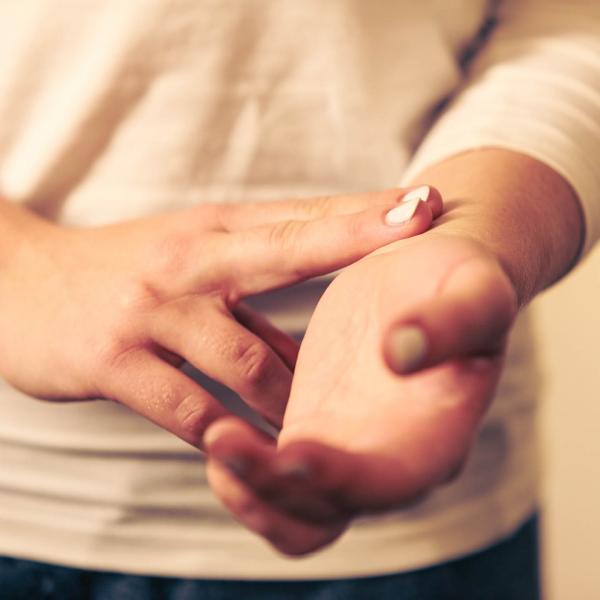What Your Heart Rate Means to Your Health

Contributions by: Abbey Corcoran, PT, DPT
With every movement and minute of exercise your body goes through during the day, your heart doesn’t always beat with regularity. If healthy, your heart will adjust to the speed of your daily activities to accommodate the need for oxygen, but this may not be the case for everyone. Each individual’s body has its own way of adjusting to their activities, but an unusually high- or low-resting heart rate could be cause for concern. Knowing your pulse, at rest and during exercise, can help identify potential risks for heart attacks or diseases. One way you can do your heart a favor and help decrease these risks is by having good cardiorespiratory fitness.
Cardiorespiratory fitness refers to the ability of the heart and lungs to supply the exercising muscles and tissue with oxygen-rich blood during physical activity. Having good cardiorespiratory fitness can help decrease your risk for cardiovascular disease and stroke. According to the American Heart Association (AHA), a person dies every 38 seconds from cardiovascular disease. Living a healthy and active lifestyle can lead to a healthy heart, decrease your risk of cardiovascular disease and help your overall health and well-being.
Assessing your heart rate
One way to assess how well your heart is functioning is by monitoring your heart rate. A normal resting heart rate ranges from 60 to 100 beats per minute (BPM). To determine your resting heart rate, place your middle and index fingers on the thumb side of your wrist. There, you will find a pulse and you can count the beats. You can count the number of beats within a 10 second timeframe and multiple that number by six to find your resting heartrate. In a healthy individual, your heart rate can reveal how efficient your heart is working.
Your heart rate is determined by how efficiently your heart pumps blood throughout your body per beat. There are four chambers in your heart that help with this process, however, the most important chamber for determining your heart rate is the left ventricle. The left ventricle is responsible for pumping oxygen-rich blood to the entire body. If your left ventricle can pump a larger volume of blood throughout your body per heartbeat, then it will take fewer beats per minute to distribute the same amount of blood.
Endurance athletes, such as marathon runners and cross country skiers, who have very high cardiorespiratory fitness, have a stronger and larger left ventricle. This makes it possible to pump out higher volumes of blood with each beat resulting in a lower resting heart rate due to the fewer beats per minute to pump out the same amount of blood through the body. This allows endurance athletes to have resting heart rates as low as 40 bpm. The lower your resting heart rate is, the more efficient your heart is working.
Is your resting heart rate high?
If your resting heart rate seems irregular, it may not be time to run to a doctor just yet. Resting heart rates can be affected by many factors including air temperature, emotions and medication. Higher air temperatures and humidity levels increase your heart rate to help keep your body cooler. According to the Cleveland Clinic, heart rates increase by 10 bpm for every degree your body temperature elevates. Emotions such as excitement, surprise and anxiety can also elevate the heart rate due to the activation of your sympathetic nervous system (SNS). Your SNS is responsible for the “flight or fight” response and increases body responses, like your heart rate. If your heart rate seems too low or too high, check your medication to see common side effects that may influence heart rate and consult your doctor.
Lowering your resting heart rate
Regular exercise can help decrease your resting heart rate. The American College of Sports Medicine (ACSM) recommends at least 150 minutes of moderate exercise or 75 minutes of vigorous exercise per week for adults or a combination of the two. “Moderate” exercise is categorized as exercising at 65 to 75 percent of your max heart rate and “vigorous” exercise is 76 to 95 percent of your max heart rate. To determine your maximum heart rate, take 220 and subtract your age. Then, multiply that number by 0.65 and 0.75. This will give you two numbers, the range you need to be considered exercising at a moderate intensity level. For example, if an individual was 50 years old, their predicted heart rate max would 170 beats per minute (220-50) and their heart rate zone for moderate intensity exercise would be 111-128 beats per minute. If you are just beginning to exercise, start in the lower ranges such as 65 percent to improve your tolerance to the exercise program then slowly work your way up.
Beginning a new exercise program can be intimidating, especially if you have various health conditions. If you are unsure where to begin, you can see your local physical therapist. Our trained staff are experts in prescribing exercise programs to a variety of health conditions.
Are aches and pains getting in the way of your daily activities or starting an exercise program?
If simple home interventions are not helping to lessen aches, pains and discomfort, it’s time to see a physical therapist. Stop by your nearest ATI Physical Therapy clinic for a complimentary screening and get back to your regular exercise routine.
